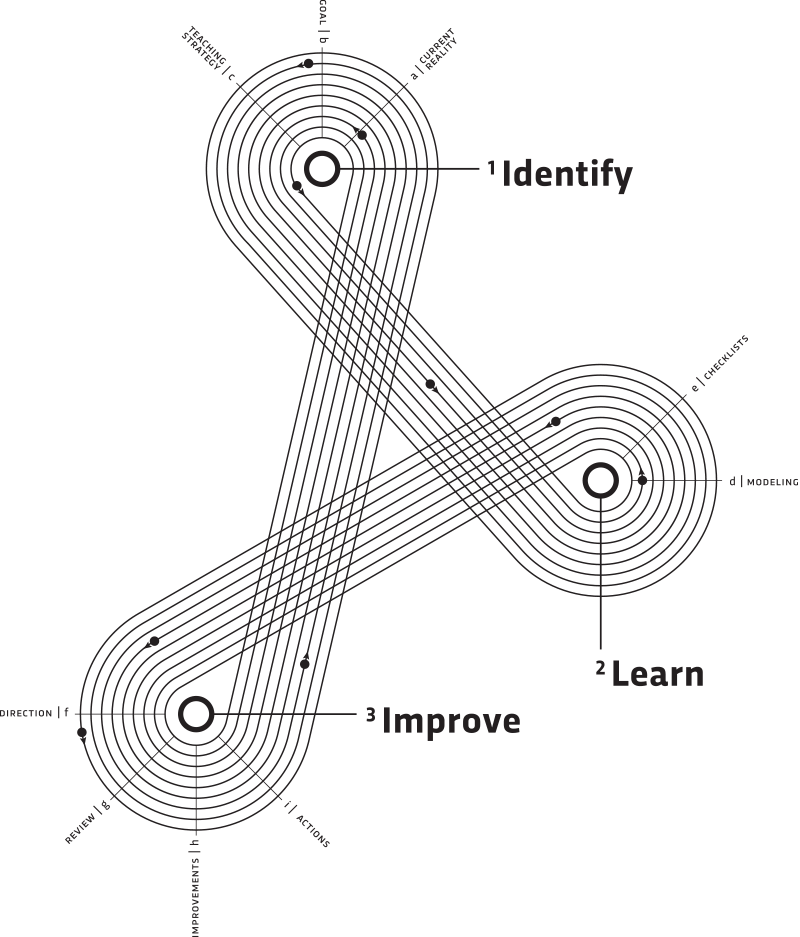The Complete Impact Cycle in Action on the ERRR Podcast
The Complete Impact Cycle in Action on the ERRR Podcast
The following is an outline of episode #052 of the Education Research Reading Room podcast. Listen to the full podcast.

Jim Knight’s recent guest appearance on Ollie Lovell’s podcast, Education Research Reading Room (ERRR) created an opportunity to showcase a live, real-time coaching cycle – giving listeners an inside perspective of how to move through each step of the Impact Cycle. Jim and Ollie begin with an overview of Jim’s work and research before diving into a live coaching session at the 34:00 minute mark to help Ollie achieve a goal in his classroom.


Before recording this episode, Ollie Lovell sent Jim Knight a video recording of his classroom, beginning the three stages of the Impact Cycle: Identify, Learn, and Improve.
Instead of simply describing each of these stages with hypotheticals, lists, and outlines, they jump right into the cycle itself. After a two-week break for Ollie to implement the strategies he learned with Jim, they met again to record the final part of the episode, completing stage three of the cycle. Listen to the full podcast to hear them break down the research and intention behind each of the actions outlined below.

Stage One: Identify
Through careful listening and thoughtful, intentional questioning, Jim coaches Ollie as he:
- gets a clear picture of reality
- He sees things in the classroom that he didn’t see when he was in the moment.
- Jim and Ollie both discuss successes they observed in the video.
- identifies areas for improvement
- They discuss several areas that Ollie identifies, Ollie chooses to focus on the students’ response to questions in the classroom, and he visualizes the change he would like to create and why.
- sets a PEERS goal (Powerful, Easy, Emotionally compelling, Reachable, and Student-focused) & identifies strategies to accomplish it.
- Ollie decides to directly and explicitly address the goal with the students to create their own ownership and agency as they work toward it.
- Jim asks if it would be useful to show students video of the classroom to help them monitor their specific behaviors.
- Ollie decides that monitoring student responses openly with an ongoing tally will create awareness and help keep them mindful of their behavior.
Stage Two: Learn
Because this coaching cycle was conducted via phone call and with limited access between coach and coachee, Jim and Ollie discuss what they would do during this stage if the coaching situation was a bit more typical. They approached this stage in two parts:
- Clearly establish what it will look like to achieve the goal.
- Co-construct a checklist to help make the specific changes needed in teaching practices.
- Gather other helpful tools or reference materials that the teacher can use to reinforce understanding.
- Model the practice to confirm understanding and confidence.
- Jim might model the practice so that Ollie could see it, they might watch a video of the practice in action, or they might observe another teacher.
- Discuss to make sure that the teacher is clearly confident in their goal, in the strategy they will use to achieve it, and in the steps required to implement the new practice.
Stage Three: Improve
Ollie and Jim reconnected two weeks later, after Ollie implemented the strategy in his classroom. He had the opportunity to implement his strategy of openly monitoring the student responses behavior with a tally, and he noticed the following:
- It was difficult to keep up with and manage the tallies while teaching.
- He wants to revisit how else to measure the trends in the data he collected through video.
- He became more sensitive to the issue in the classroom and stayed more on top of correcting it as it happened.
Through more listening and questioning, Jim and Ollie reconfirm the importance of the goal and discuss ways to improve on the strategy.
- Find new ways to gather data to measure progress.
- Regularly record audio of classes to monitor the objective reality of the classroom in a different medium from video to pick up anything missed from the video. Unlike video, this can be reviewed while walking, running, driving, or cycling.
- Use a more focused approach to reviewing video recordings of the classroom to gain more qualitative and quantitative.
- Reinforce students’ awareness of the goal.

One of the most important qualities of the Impact Cycle is its adaptability. No one solution or strategy will apply to all teachers or students. Instead, Jim and Ollie use the Impact Cycle’s framework and a partnership approach to address the specific and unique needs of Ollie’s students and empower Ollie – the teacher, not the coach – to drive the change and reach his goal. There’s no magic formula for success, but the Impact Cycle sets up educators to address all of the complexity and nuance of their real classroom so that students can experience better learning and better lives.
Join the Conversation
Do you have a coaching story to share?
We love hearing how instructional coaching is impacting the life, work, and relationships of people all over the world. Share your story with us today.

.svg)



